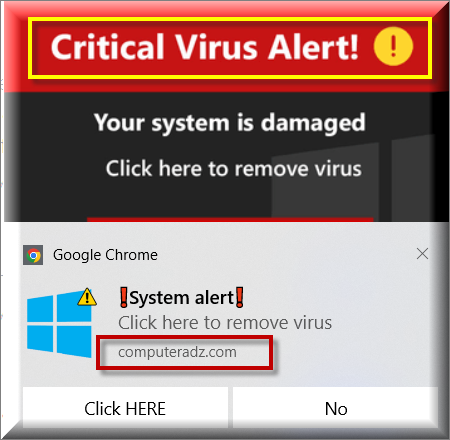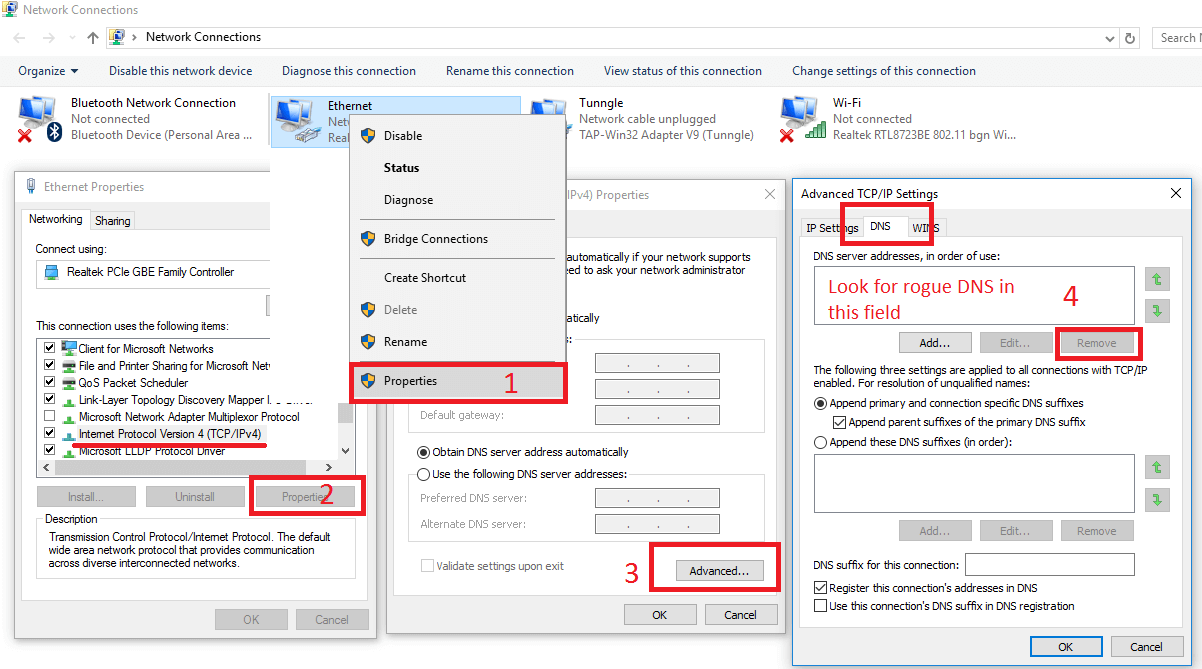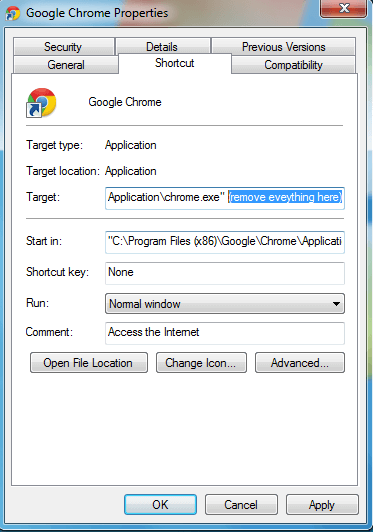Critical Virus Alert
“Critical Virus Alert” is a program categorized as a browser hijacker due to the uninvited changes it makes to the browsers it becomes incorporated in. Some of the changes imposed by “Critical Virus Alert” result in the generation of tons of popups, banners and various other online ads.

The invasion of ads caused by browser hijacker/browser redirect apps like “Critical Virus Alert” is certainly not something that you would like to experience. However, since you are on this page reading an article about “Critical Virus Alert”, we assume that you already have the intrusive application in your browser and would now like to learn how to uninstall it.
The main reason why most people don’t want to have hijackers on their computers is because apps like these have the ability to show different advertisements in the browser window whenever the browser is being used. Not only are the adverts annoying but they may also be responsible for the exposure of your computer to various online hazards including Trojan horse infections and ransomware.
Another unpleasant trait that the hijackers oftentimes display is their ability to make changes to the search engine or the homepage settings of Chrome, Firefox, Opera, Edge, Safari and other popular browsers. Of course, said changes are more likely to get in your way rather than help you with anything and this is understandable. After all, the main goal of “Critical Virus Alert” isn’t to actually benefit you but to make you interact with as many of its ads and go to as many of the sites of its sponsors so that its creators would earn more money.
In order to generate income, apps like “Critical Virus Alert” and Computeradz use remuneration models like Pay Per Click where every click on an ad translates to a small amount of money earned. Another similar model is Pay Per View where money is earned based on how many users visit a given site after being redirected to it by the hijacker.
The changes made to your browser by such apps are usually nothing but tools used to make the whole advertising campaign more effective. For instance, the new search engine that has been enforced by “Critical Virus Alert” onto your browser will probably modify the actual search results in favor of sites and pages that the hijacker is supposed to promote and advertise. The new homepage is also likely a big advert of a given site which you would now be visiting each and every time you open the browser
Dangers
The worst part of having a hijacker, however, isn’t that it is annoying or invasive – it is the fact that it may be risky for your computer to have such an app added to your browser.
You see, the ads you are shown in the browser are rarely under any sort of quality control. They may be coming from all kinds of sketchy sources and sites and you have no way of knowing whether or not a certain advert is safe. Even if you generally try to stay away from the adverts, it’s always possible that you may click on some of them accidentally and this may, in turn, expose you to some nasty viruses like Trojan infections, spyware or ransomware. Therefore, the wise thing to do would be to uninstall the obstructive app and get rid of its ads for good.
SUMMARY:
| Name | Critical Virus Alert |
| Type | Browser Hijacker |
| Danger Level | Medium (nowhere near threats like Ransomware, but still a security risk) |
| Symptoms | There can be different symptoms such as intrusive ad-generation and page redirects in the browser as well as search engine and homepage changes that were never approved by you. |
| Distribution Method | Different forms of file bundling is what software developers normally use to distribute hijackers. |
| Detection Tool |
Remove “Critical Virus Alert” Scam
If you have a Windows virus, continue with the guide below.
If you have a Mac virus, please use our How to remove Ads on Mac guide.
If you have an Android virus, please use our Android Malware Removal guide.
If you have an iPhone virus, please use our iPhone Virus Removal guide

Some of the steps will likely require you to exit the page. Bookmark it for later reference.
Reboot in Safe Mode (use this guide if you don’t know how to do it).

WARNING! READ CAREFULLY BEFORE PROCEEDING!
Press CTRL + SHIFT + ESC at the same time and go to the Processes Tab (the “Details” Tab on Win 8 and 10). Try to determine which processes are dangerous.

Right click on each of them and select Open File Location. Then scan the files with our free online virus scanner:

After you open their folder, end the processes that are infected, then delete their folders.
Note: If you are sure something is part of the infection – delete it, even if the scanner doesn’t flag it. No anti-virus program can detect all infections.

Hold together the Start Key and R. Type appwiz.cpl –> OK.

You are now in the Control Panel. Look for suspicious entries. Uninstall it/them.
Type msconfig in the search field and hit enter. A window will pop-up:

Startup —> Uncheck entries that have “Unknown” as Manufacturer or otherwise look suspicious.

Hold the Start Key and R – copy + paste the following and click OK:
notepad %windir%/system32/Drivers/etc/hosts
A new file will open. If you are hacked, there will be a bunch of other IPs connected to you at the bottom. Look at the image below:

If there are suspicious IPs below “Localhost” – write to us in the comments.
Open the start menu and search for Network Connections (On Windows 10 you just write it after clicking the Windows button), press enter.
- Right-click on the Network Adapter you are using —> Properties —> Internet Protocol Version 4 (ICP/IP), click Properties.
- The DNS line should be set to Obtain DNS server automatically. If it is not, set it yourself.
- Click on Advanced —> the DNS tab. Remove everything here (if there is something) —> OK.


- After you complete this step, the threat will be gone from your browsers. Finish the next step as well or it may reappear on a system reboot.
Right click on the browser’s shortcut —> Properties.
NOTE: We are showing Google Chrome, but you can do this for Firefox and IE (or Edge).

Properties —–> Shortcut. In Target, remove everything after .exe.

![]() Remove “Critical Virus Alert” from Internet Explorer:
Remove “Critical Virus Alert” from Internet Explorer:
Open IE, click ![]() —–> Manage Add-ons.
—–> Manage Add-ons.

Find the threat —> Disable. Go to ![]() —–> Internet Options —> change the URL to whatever you use (if hijacked) —> Apply.
—–> Internet Options —> change the URL to whatever you use (if hijacked) —> Apply.
 Remove “Critical Virus Alert” from Firefox:
Remove “Critical Virus Alert” from Firefox:
Open Firefox, click ![]() ——-> Add-ons —-> Extensions.
——-> Add-ons —-> Extensions.

 Remove “Critical Virus Alert” from Chrome:
Remove “Critical Virus Alert” from Chrome:
Close Chrome. Navigate to:
C:/Users/!!!!USER NAME!!!!/AppData/Local/Google/Chrome/User Data. There is a Folder called “Default” inside:

Rename it to Backup Default. Restart Chrome.

Type Regedit in the windows search field and press Enter.
Inside, press CTRL and F together and type the threat’s Name. Right click and delete any entries you find with a similar name. If they don’t show up this way, go manually to these directories and delete/uninstall them:
- HKEY_CURRENT_USER—-Software—–Random Directory. It could be any one of them – ask us if you can’t discern which ones are malicious.
HKEY_CURRENT_USER—-Software—Microsoft—-Windows—CurrentVersion—Run– Random
HKEY_CURRENT_USER—-Software—Microsoft—Internet Explorer—-Main—- Random
If the guide doesn’t help, download the anti-virus program we recommended or try our free online virus scanner. Also, you can always ask us in the comments for help!

Leave a Comment